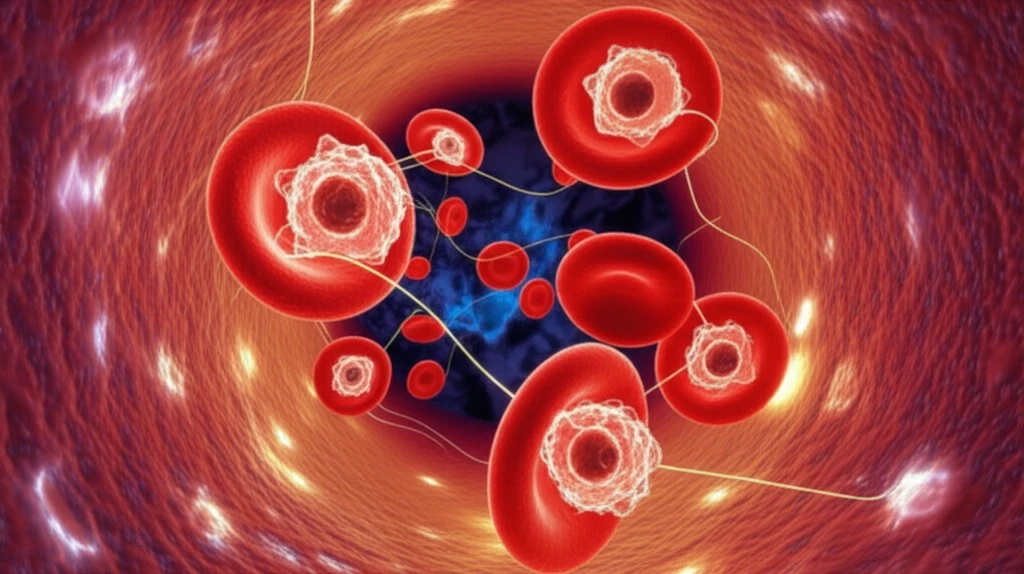
Decoding Your Blood: How Non-Coding RNAs Are Revolutionizing Red Blood Cell Health
"Unlocking the Secrets Within: Exploring the Role of Tiny RNAs in the Development and Function of Red Blood Cells"
In the vast landscape of our bodies, a silent conversation is constantly taking place at the cellular level. This conversation, orchestrated by complex molecular interactions, is essential for maintaining health and fighting disease. Among the key players in this intricate dance are long non-coding RNAs, or lncRNAs, tiny molecules that are now being recognized as critical regulators of various biological processes, particularly in the development and function of our red blood cells.
Red blood cells, the workhorses of our circulatory system, are responsible for carrying oxygen throughout the body. The process of creating these vital cells, called erythropoiesis, is a tightly controlled process. Recent research has unveiled the significant role of lncRNAs in regulating this process, from the early stages of cell proliferation to the final stages of maturation. This groundbreaking research has opened doors to a deeper understanding of blood disorders and potential new treatments.
This article delves into the world of lncRNAs, exploring their functions, the mechanisms by which they operate, and their implications for red blood cell health. We'll break down complex scientific concepts into easy-to-understand terms, examining the latest findings and highlighting the potential of lncRNAs to revolutionize the treatment of blood-related diseases.
The Symphony of Life: How lncRNAs Orchestrate Red Blood Cell Development

Erythropoiesis, the process of red blood cell formation, is a carefully choreographed series of events. Starting from stem cells, the process involves multiple stages of differentiation, proliferation, and maturation. Each stage requires precise regulation to ensure the production of healthy, functional red blood cells. LncRNAs have emerged as key players in this intricate process, acting as molecular conductors to fine-tune gene expression and control cell behavior.
- Regulating Gene Expression: LncRNAs can influence the activity of genes by interacting with DNA, RNA, and proteins. They can either promote or suppress the expression of genes, ensuring the correct timing and level of gene products needed for each stage of red blood cell development.
- Controlling Cell Differentiation: By modulating gene expression, lncRNAs help guide the differentiation of blood cells from immature precursors into mature, functional red blood cells.
- Influencing Cell Proliferation and Apoptosis: LncRNAs play a role in regulating how quickly blood cells divide and whether they undergo programmed cell death (apoptosis). This balance is essential for maintaining a healthy supply of red blood cells.
- Fine-Tuning Maturation: LncRNAs are involved in the later stages of red blood cell maturation, including the expulsion of the nucleus and the production of hemoglobin, the oxygen-carrying protein in red blood cells.
The Future of Blood Health: LncRNAs as Potential Therapeutic Targets
The discovery of lncRNAs' roles in erythropoiesis has opened exciting new avenues for treating blood disorders. Researchers are actively exploring how to manipulate lncRNAs to correct imbalances and improve red blood cell production. This includes developing drugs that can either activate or inhibit specific lncRNAs, thereby controlling gene expression and influencing the course of diseases like anemia and other hematological conditions. The ongoing exploration of lncRNAs offers a promising future for improving blood health and revolutionizing the treatment of blood-related diseases.
